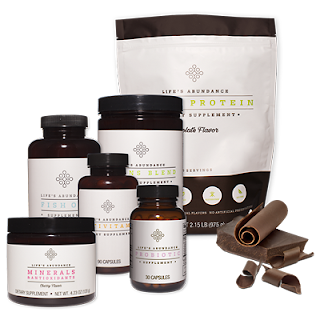Coffea, a member of the Rubiaceae family is responsible for the
biological heritage of “coffee.” The Rubiaceae family includes
more than 500 genera and 6,000 species of tropical trees and
shrubs.

It is doubtful the average person would recognize an actual
coffee tree. Most of us would recognize a roasted coffee bean.
Just in case you stumble upon something you think might be a
real coffee tree, here is a quick description of one:

•Pruned short in cultivation
•Capable of growing more than 30 feet high
•Generally covered with dark-green, waxy leaves that grow
opposite each other in pairs, although a coffee tree can also
have leaves that are purple or yellow (dark green is the
predominant color) The leaves may be 1 to 40 centimeters in size
•Coffee cherries grow along the tree’s branches (see below for a
description of coffee cherries)
•Coffee cherries bloom into flowering, fragrant, white blossoms
after about a year
•Because coffee cherries grow in a continuous cycle you might
see flowers, green fruit and ripe fruit at the same time on a
single tree
A coffee tree can live as long as 20 to 30 years. They are
capable of growing in a wide range of climates so long as the
climate does not have harsh fluctuations in temperature. Coffee
trees grow best in a rich soil and mild temperature with
frequent rain and shaded sun. Heavy frost will kill coffee
trees.
It is estimated that there are 25 to 100 species of coffee
plants. In the commercial coffee industry, there are two
important coffee species. These are:
•Arabica
•Canephora (more commonly called robusta)
Varieties of Coffea Arabica – C. Arabica include:
•Bourbon
•Typica
•Caturra
•Mundo
•Novo
•Tico
•San Ramon
•Jamaican Blue Mountain
The original coffee trees were discovered in Ethiopia. Coffea
Arabica comes from these original coffee trees. The coffee trees
in Ethiopia produce a fine, mild, aromatic coffee. Over half of
the world’s coffee production originates from the coffee trees
in Ethiopia. Arabica coffees bring the highest prices in the
world market of coffee. Better arabicas are high grown coffees,
generally between 2,000 to 6,000 feet above sea level.
The Arabica coffee trees are costly to cultivate due to the
following factors:
•The terrain tends to be steep and access is difficult
•The Arabica coffee trees are more disease prone than robusta
coffee trees, which requires additional care and attention
Arabica coffee tree beans are flatter and more elongated than
robusta coffee tree beans and “lower in caffeine.”
Variety of Coffea canephora – C. canephora var. robusta include:
•Robusta
The robusta coffee tree tends to be hearty and is more disease
and parasite resistant. This makes the robusta coffee tree
easier and cheaper to cultivate. The robusta coffee tree is able
to withstand warmer climates and prefers constant temperatures
between 75 and 85 degrees. It needs about 60 inches of rainfall
per year and cannot stand up to a frost. Robusta beans produce a
coffee with a distinctive taste and about 50-60% more caffeine
than the Arabica coffee tree beans.
Most robusta coffee trees are grown in Central and Western
Africa, parts of Southeast Asia, which includes Indonesia and
Vietnam. Brazil is also a country in which the robusta coffee
tree is grown, however, Brazil accounts for only about 30
percent of the world market.
What does a “coffee cherry” look like? You will recognize a
“coffee cherry” by the following characteristics:

•The outer skin of a coffee cherry is called the “exocarp”
•Beneath the exocarp is the “mesocarp,” which is a thin layer of
pulp
•This thin layer of pulp is followed by a slimy layer called the
“parenchyma”
•The beans themselves are covered in a parchment-like envelope
called the “endocarp” and more commonly called “the parchment”
•Inside the parchment, side-by side lie two beans
•Each of these beans are covered separately by another layer of
thin membrane or seed skin called “spermoderm”
•The spermoderm is generally referred to in the coffee trade as
the “silver skin.”
Source: The National Coffee Association
Most research today suggest drinking coffee in moderation is healthy.
Drinks that may be healthier include the Life's Abundance Minerals and Antioxidants and Life's Abundance Greens Blend. Both these drinks help us get more of the recommended daily portions of fruits and vegetables.
Join the Life's Abundance Team and start helping pets and humans live longer, healthier lives while at the same time earning extra income or full time income.
LET'S GET STARTED
biological heritage of “coffee.” The Rubiaceae family includes
more than 500 genera and 6,000 species of tropical trees and
shrubs.

It is doubtful the average person would recognize an actual
coffee tree. Most of us would recognize a roasted coffee bean.
Just in case you stumble upon something you think might be a
real coffee tree, here is a quick description of one:

•Pruned short in cultivation
•Capable of growing more than 30 feet high
•Generally covered with dark-green, waxy leaves that grow
opposite each other in pairs, although a coffee tree can also
have leaves that are purple or yellow (dark green is the
predominant color) The leaves may be 1 to 40 centimeters in size
•Coffee cherries grow along the tree’s branches (see below for a
description of coffee cherries)
•Coffee cherries bloom into flowering, fragrant, white blossoms
after about a year
•Because coffee cherries grow in a continuous cycle you might
see flowers, green fruit and ripe fruit at the same time on a
single tree
A coffee tree can live as long as 20 to 30 years. They are
capable of growing in a wide range of climates so long as the
climate does not have harsh fluctuations in temperature. Coffee
trees grow best in a rich soil and mild temperature with
frequent rain and shaded sun. Heavy frost will kill coffee
trees.
It is estimated that there are 25 to 100 species of coffee
plants. In the commercial coffee industry, there are two
important coffee species. These are:
•Arabica
•Canephora (more commonly called robusta)
Varieties of Coffea Arabica – C. Arabica include:
•Bourbon
•Typica
•Caturra
•Mundo
•Novo
•Tico
•San Ramon
•Jamaican Blue Mountain
The original coffee trees were discovered in Ethiopia. Coffea
Arabica comes from these original coffee trees. The coffee trees
in Ethiopia produce a fine, mild, aromatic coffee. Over half of
the world’s coffee production originates from the coffee trees
in Ethiopia. Arabica coffees bring the highest prices in the
world market of coffee. Better arabicas are high grown coffees,
generally between 2,000 to 6,000 feet above sea level.
The Arabica coffee trees are costly to cultivate due to the
following factors:
•The terrain tends to be steep and access is difficult
•The Arabica coffee trees are more disease prone than robusta
coffee trees, which requires additional care and attention
Arabica coffee tree beans are flatter and more elongated than
robusta coffee tree beans and “lower in caffeine.”
Variety of Coffea canephora – C. canephora var. robusta include:
•Robusta
The robusta coffee tree tends to be hearty and is more disease
and parasite resistant. This makes the robusta coffee tree
easier and cheaper to cultivate. The robusta coffee tree is able
to withstand warmer climates and prefers constant temperatures
between 75 and 85 degrees. It needs about 60 inches of rainfall
per year and cannot stand up to a frost. Robusta beans produce a
coffee with a distinctive taste and about 50-60% more caffeine
than the Arabica coffee tree beans.
Most robusta coffee trees are grown in Central and Western
Africa, parts of Southeast Asia, which includes Indonesia and
Vietnam. Brazil is also a country in which the robusta coffee
tree is grown, however, Brazil accounts for only about 30
percent of the world market.
What does a “coffee cherry” look like? You will recognize a
“coffee cherry” by the following characteristics:

•The outer skin of a coffee cherry is called the “exocarp”
•Beneath the exocarp is the “mesocarp,” which is a thin layer of
pulp
•This thin layer of pulp is followed by a slimy layer called the
“parenchyma”
•The beans themselves are covered in a parchment-like envelope
called the “endocarp” and more commonly called “the parchment”
•Inside the parchment, side-by side lie two beans
•Each of these beans are covered separately by another layer of
thin membrane or seed skin called “spermoderm”
•The spermoderm is generally referred to in the coffee trade as
the “silver skin.”
Source: The National Coffee Association
Most research today suggest drinking coffee in moderation is healthy.
Drinks that may be healthier include the Life's Abundance Minerals and Antioxidants and Life's Abundance Greens Blend. Both these drinks help us get more of the recommended daily portions of fruits and vegetables.
Do you enjoy sharing helpful health care information for pets and humans? If so:
You might be surprised to know using and recommending the Life's Abundance pet and human products can result in a substantial part time or full time income.
Join the Life's Abundance Team and start helping pets and humans live longer, healthier lives while at the same time earning extra income or full time income.
Our Human supplements are endorsed by Keri Glassman.
Ms. Glassman’s long-established reputation as a leader in her field positions her as a highly sought after speaker and regular guest on major television programs, where she shares her insights on nutrition and healthy eating. In addition to authoring six popular books on diet, nutrition and healthy living, she also serves as an advisor to both Women’s Health Magazine and Yahoo Health and is a contributor to People Magazine and Foodnetwork.com.
As founder of Keri Glassman Nutritious Life, Keri and her team help many private clients, including celebrities, live happier, healthier lives by balancing nutrition, sleep, exercise and stress management, among other things.
Keri’s passion is driven by the idea that excellent nutrition should be attainable for everyone. And, pairing with Life’s Abundance helps her further her mission of empowering the public to take charge of their wellness through nutrition.
That’s why Ms. Glassman wholeheartedly endorses these meticulously formulated products with hand-picked ingredients and no GMOs, gluten, dairy, grains or anything artificial to provide clean, healthy choices for those that are striving to lead more nutritious lives.
Keri’s passion is driven by the idea that excellent nutrition should be attainable for everyone. And, pairing with Life’s Abundance helps her further her mission of empowering the public to take charge of their wellness through nutrition.
That’s why Ms. Glassman wholeheartedly endorses these meticulously formulated products with hand-picked ingredients and no GMOs, gluten, dairy, grains or anything artificial to provide clean, healthy choices for those that are striving to lead more nutritious lives.
USE OUR PRODUCTS.
IF YOU BECOME IMPRESSED WITH OUR PRODUCTS, JUST WAIT UNTIL YOU HEAR ABOUT OUR INCOME OPPORTUNITY. YOU MIGHT BE SURPRISED TO LEARN THAT YOU CAN EARN A SUBSTANTIAL INCOME FROM SELLING OUR HEALTH-PROMOTING PRODUCTS FOR PETS AND HUMANS. THERE'S NEVER BEEN A MORE EXCITING TIME TO SIGN-UP AS A LIFE'S ABUNDANCE FIELD REPRESENTATIVE. WITH NEW PRODUCT RELEASES ON THE HORIZON, YOU WILL FIND MORE WAYS TO REACH NEW CUSTOMERS AND NET SERIOUS WAGES. IT IS AN OPPORTUNITY THAT WILL KEEP YOU ENGAGE WITH OTHER PEOPLE IN A "HELPING" KIND OF WAY.
NO PRODUCTS TO STOCK OR SHIP OUT. LIFE'S ABUNDANCE TAKES CARE OF THE ENTIRE PURCHASE TRANSACTION ALONG WITH SHIPPING. LIFE'S ABUNDANCE CUSTOMERS ENJOY FAST SHIPPING WITHIN 2 BUSINESS DAYS OF ORDERING.
LET'S GET STARTEDIF YOU BECOME IMPRESSED WITH OUR PRODUCTS, JUST WAIT UNTIL YOU HEAR ABOUT OUR INCOME OPPORTUNITY. YOU MIGHT BE SURPRISED TO LEARN THAT YOU CAN EARN A SUBSTANTIAL INCOME FROM SELLING OUR HEALTH-PROMOTING PRODUCTS FOR PETS AND HUMANS. THERE'S NEVER BEEN A MORE EXCITING TIME TO SIGN-UP AS A LIFE'S ABUNDANCE FIELD REPRESENTATIVE. WITH NEW PRODUCT RELEASES ON THE HORIZON, YOU WILL FIND MORE WAYS TO REACH NEW CUSTOMERS AND NET SERIOUS WAGES. IT IS AN OPPORTUNITY THAT WILL KEEP YOU ENGAGE WITH OTHER PEOPLE IN A "HELPING" KIND OF WAY.
THIS IS A MOST EXCITING TIME TO BUILD A NETWORK MARKETING BUSINESS






